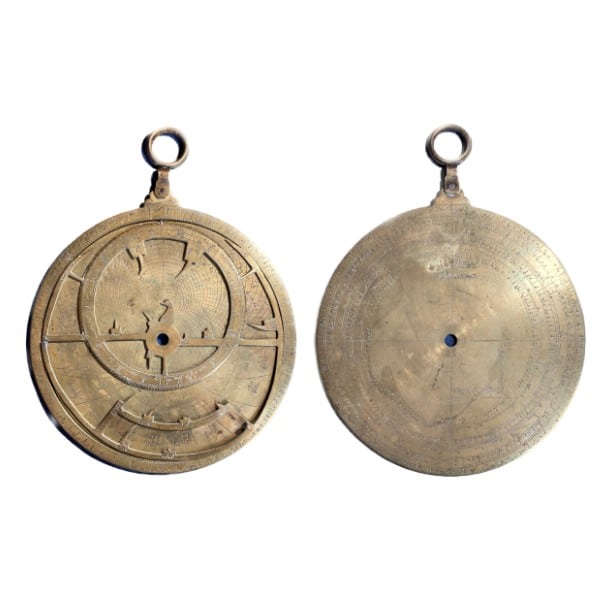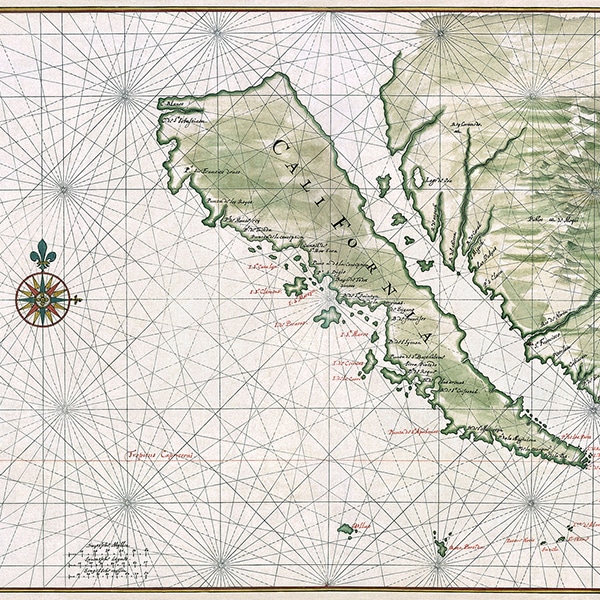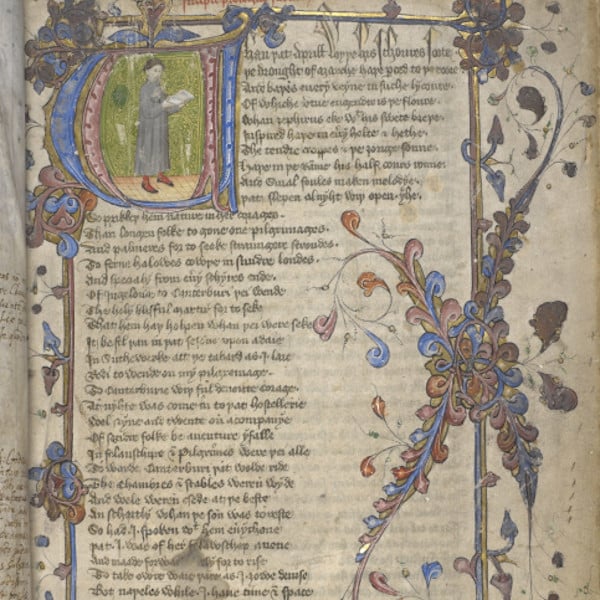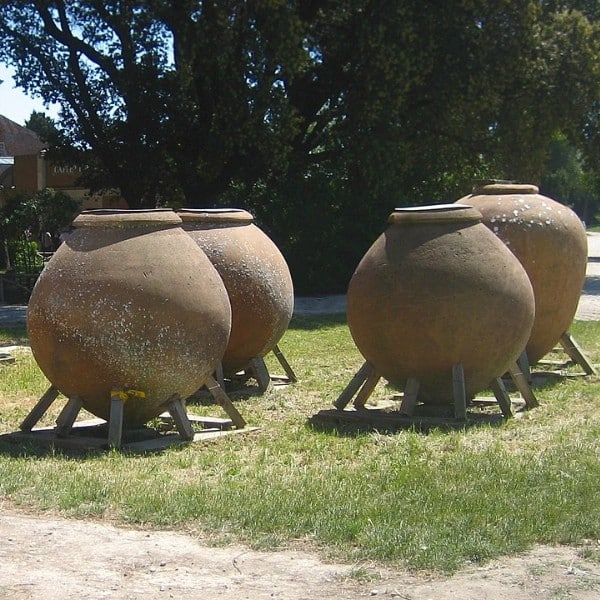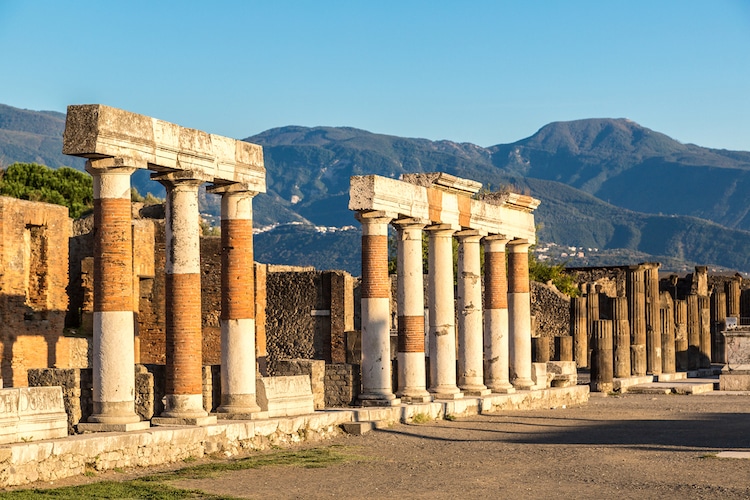
Photo: bloodua/Depositphotos
In 79 CE, thousands of lives instantly changed when the eruption of Mount Vesuvius buried the town of Pompeii under 23 feet of ash and debris. Over 2,000 people perished in the disaster, many inside their homes. Now, for the first time, researchers have been able to fully sequence the DNA of one victim. Thanks to their work, we have even more insight into the people who called Pompeii their home.
A study published in Nature details how the team looked to analyze the DNA of two people whose remains were found in the Casa del Fabbro, which was excavated in 1914. The bodies belonged to a man in his late 30s or early 40s and a 50-year-old woman. They were discovered lying in their dining room—or triclinium—on the remains of a chaise lounge. The fact that they were most likely enjoying a leisurely meal when disaster struck is not unusual. In fact, the study's authors state that, “more than half of individuals found in Pompeii died inside their houses, indicating a collective unawareness of the possibility of a volcanic eruption or that the risk was downplayed due to the relatively common land tremors in the region.”
Extracting DNA from the petrous bone at the base of the skulls, they were able to discover the sex, ages, and height of the victims. The man was about five foot four inches, while the woman was around five feet. Although complete information could not be obtained from the woman's DNA due to gaps in the sequences, they were able to sequence the man's entire genome. Prior to this, only short strands of mitochondrial DNA from human and animal remains had been sequenced from Pompeii.
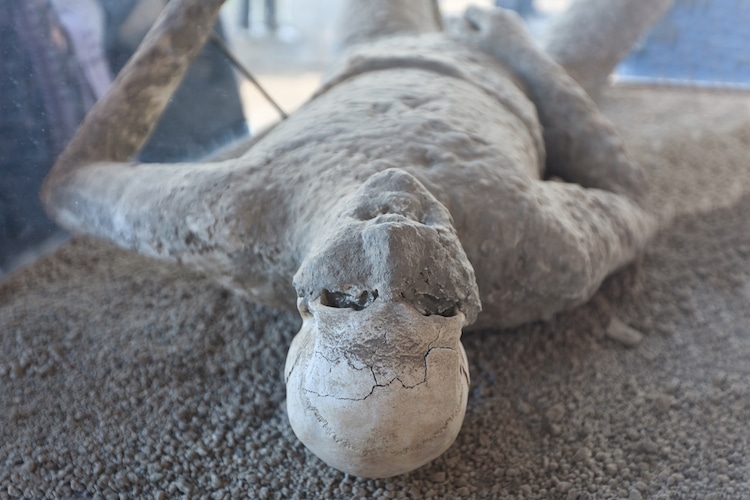
Photo: porojnicu/Depositphotos (Not a photo of the actual remains analyzed.)
So what did they learn? First, they saw that his genetics were similar to modern individuals living in central Italy, as well as to those living during the Roman Imperial Era. Interestingly, they also noted a group of genes common to individuals living in Sardinia, though not present in those living in mainland Italy at the time. This suggests that there may be more genetic diversity across the Italian Peninsula than originally thought. Their findings also noted that the man was also afflicted with spinal tuberculosis, a common ailment at the time.
All of this information is useful in putting together the puzzle of life in Italy during the Roman Empire. And, it gives researchers hope that there is even more DNA that could be examined. The volcanic ash that buried Pompeii is quite helpful in shielding fragile DNA from its main enemy—oxygen—so it is possible that more complete sequencing of other victims is around the corner.
For the team, the chance to work on such a historic site was an honor. “To take part in a study like this was a great privilege, Pompeii is a unique context in all points of view, the anthropological one allows one to study a human community involved in a natural disaster,” said Gabriele Scorrano, an assistant professor of geogenetics at the University of Copenhagen and lead author of the study.
“Pompeii is one of the most unique and remarkable archaeological sites on the planet, and it is one of the reasons that we know so much about the classical world. To be able to work and contribute in adding more knowledge about this unique place is unbelievable.”
h/t: [Smithsonian]
Related Articles:
Watch the Final Hours of the Once-Vibrant City of Pompeii
Pompeii’s Fully Preserved Ancient “Snack Bar” Opens to the Public
1,900-Year-Old Ceremonial Chariot Has Been Discovered Near Pompeii
Stunning Drone Video Captures Sweeping Views of the Ancient Ruins of Pompeii











































































